But my turn to recant has come, as extensive blind tastings of 2016 vintage Barolo wines in the area in late January of 2020 convinced me that these wines are even better than their extraordinary predecessors from 2010. I was once sure that 2010 would be the best year I’d live to see from my beloved Barolo district, and though I’ve definitely not changed my mind about the greatness of the wines made in that year, I confess to having fallen even more deeply in love with the 2016s.
Granted, they are not quite as dramatic and “impressive” as the 2010s, which combine acidic freshness, full ripeness, remarkable palate impact and big, tannic structure like no vintage I’ve ever experienced. But with that noted, along with my enduring conviction that I was wise to buy every single bottle from 2010 that I bought…the 2016s are more harmonious, proportional and simply beautiful wines as a group.
I don’t quite know how I’m going to manage to buy as many of the 2016s as their magnificence warrants, but I will find a way. Stated differently, don’t leave your wallet untended in my presence, no matter who you may be–family and friends included–as I’ll resort to almost anything to stock up on these wines and assure my happiness over the decades ahead.
I’m fully aware that all this gushing could come back to haunt me if another vintage of this caliber comes along before long, as my opening paragraph shows. Yet, I’m not much concerned about that happening, due the fact that I’m all-too-concerned that climate change in Barolo and Barbaresco simply won’t allow another growing season like 2016 to occur.
To cite a specific fact underlying this concern, the warmest segment of 2016 didn’t witness a single day when temperatures exceeded 35 degrees Centigrade. Based on recent trends, that’s a record that may take a long time to break–if ever–in this rapidly warming region. However, adding in another couple of facts will help indicate how truly historic 2016 will likely look in retrospect: The Nebbiolo fruit in Barolo and Barbaresco achieved absolutely full ripeness despite the aforementioned lack of heat spikes, as proved by average measured quantities of malic acid below 1 gram per liter.
Add to that the third fact that average alcohol levels were quite moderate despite perfect ripeness, and you could start to believe that the ancient Roman goddess Fortuna blessed this vintage. Could this combination of factors ever recur, or even be surpassed? Sure, anything is possible, in the same sense that it is possible that Wayne Gretzky’s NHL record for hockey assists will be equaled, or that pigs will fly.
How do I love thee, 2016s? Let me count the ways. First, the wines are beautiful to behold, with excellent color at this point in their development, and rarely the slightest hint of any premature brick-ish tint, as with some wines from hot years like 2011.
Second, their bouquets are very expressive as a rule, with lovely floral scents (think violets) but almost never any aromatic suggestion of stewed fruits.
Third, they show generous flavors with a lovely streak of sweetness, but their generosity almost never tips over the line separating stylishness from flamboyance, just as their sweetness never seems candied, as can result when sugars in the grapes soar during heat spikes at harvest time.
Fourth, they hold lots of tannins, but ones that are very fine in grain and almost never overly astringent, even with some still-to-be-absorbed wood tannins still evident in these very young wines. Consequently, they exhibit just the right degree of “grip” in their finishes to balance and frame the lovely fruit without foreshortening the aftertaste of the wines.
Fifth, there is an (almost uncanny) inner proportionality and harmony in a very high percentage of the wines. This may look strange in print, but their deliciousness comes across as effortless: None of their elements seem to be pushing or pulling against any of the other flavor or structural elements. Everything fits, and everything seems to have fit in easily.
Finally, and following from the last point, these wines will be incredibly easy to enjoy when young…needing a lot less time to settle and soften and integrate than the 2010s. The ‘10s were also very balanced in terms of acidity and ripeness, but did a lot more pushing and pulling to achieve balance in their youth, and took a lot longer than the ‘16s will need to hit their stride.
Indeed, many of the 2016s have already hit their stride, with the likely result that a lot of them will be consumed before they can attain their full potential. Graceful as they are, they will be hard to resist in the years immediately ahead. However, savvy consumers will be handsomely rewarded for disciplined restraint, as these wines will remain graceful as they become even more complex while tertiary notes from time in bottle are layered over their lovely primary fruit and generally restrained oak treatment.
I’ll still need to add a few more reviews to include all the top wines and best values from this amazing vintage, but the profiles below will offer you plenty of motivation to budget for the arrival of the 2016s, which is just now underway.
To explain the entries below, what you’ll see in the parentheses (after producer name) is the name of the village or comune with which the vineyard is associated. This is only confusing when the comune in question is Barolo, for the obvious reason that that is also the name of the broader appellation. Although these village names are obviously not as fine-tuned as particular vineyards, they are still stylistically indicative, just as in Burgundy, where vineyards cluster meaningfully in style at the level of the village, as with how "Gevrey-Chambertin" provides a pretty reliable first clue by contrast to "Chambolle-Musigny."
The wines appear in order of preference based on point scores, with alphabetical order by producer name used for wines earning the same score. The producer names are themselves potentially confusing, as the local tradition among producers around Alba is to indicate the family name before any given names, though this is not uniformly practiced…this being Italy, after all. Prices are approximate, based on recent vintages of comparable quality such as 2015:
Vietti (Serralunga) Barolo “Lazzarito” 2016 ($200): In the 2015 vintage, I thought “Ravera” from Novello was Vietti’s best bottling (and my “Wine of the Year” for all of 2019), but this Lazzarito is my pick from 2016. It is breathtakingly impressive, with an almost eerie combination of power and grace. For example, it is hugely flavorful but not huge, really being just medium-bodied. Similarly, it carries loads of tannin, but so fine-grained that there isn’t the slightest sensory astringency, even at the end of the finish. The proportions of everything seem unquestionable, and the integration of the elements is likewise seemingly perfect: Acid, fruit, tannin, wood… everything is just right, and everything lets everything else express itself. Delicious now, but surely even better 25 years from now, this is the kind of wine that can defy 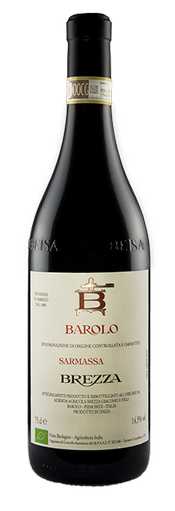 belief that such a work of art could result from… grapes. Even at 99, I may be under-scoring this. 99
belief that such a work of art could result from… grapes. Even at 99, I may be under-scoring this. 99
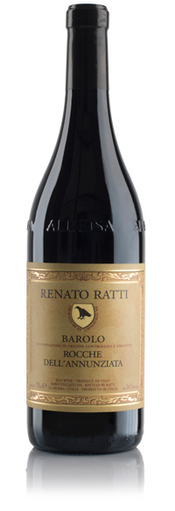 sits in the Barolo hierarchy, with top vintages such as 2015 and 2016 selling for over $100 (and for $130 at Zachys in New York, which is usually competitive nationally). The good news is that both the 2015 and 2016 are fabulous, and still less expensive than some of their quality peers that have a bit more “cult” status. The ’16 is notably different than its predecessor, with significantly lighter pigment concentration as well as physical density. However, it would be a very bad mistake to downgrade the wine for those reasons, as it displays absolutely gorgeous aromas with floral notes, woodspice and ripe scents of dried cherries that could hardly be more seductive. The flavors follow suit, but also add a wonderful savory note recalling cured meat. In overall profile, this offers an incredibly high ratio of aroma and flavor to weight, and in that respect will remind many tasters more of Grand Cru Burgundy than their stereotypical notion of Barolo. But make no mistake: This is truly great Barolo, and a jaw-droppingly beautiful wine. 98
sits in the Barolo hierarchy, with top vintages such as 2015 and 2016 selling for over $100 (and for $130 at Zachys in New York, which is usually competitive nationally). The good news is that both the 2015 and 2016 are fabulous, and still less expensive than some of their quality peers that have a bit more “cult” status. The ’16 is notably different than its predecessor, with significantly lighter pigment concentration as well as physical density. However, it would be a very bad mistake to downgrade the wine for those reasons, as it displays absolutely gorgeous aromas with floral notes, woodspice and ripe scents of dried cherries that could hardly be more seductive. The flavors follow suit, but also add a wonderful savory note recalling cured meat. In overall profile, this offers an incredibly high ratio of aroma and flavor to weight, and in that respect will remind many tasters more of Grand Cru Burgundy than their stereotypical notion of Barolo. But make no mistake: This is truly great Barolo, and a jaw-droppingly beautiful wine. 98 Cascina Ballarin (Monforte d’Alba) Barolo “Bussia” 2016 ($70): This wine put in a sensational showing when tasted blind in January 2020, though I 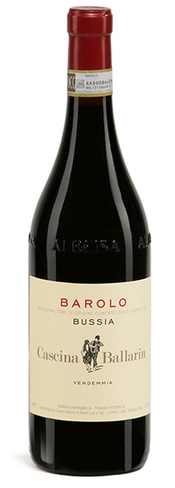 wonder whether it might be a bit prematurely developed. That’s impossible to assess from a single tasting, but I should note the caveat before heaping praise on this wine. The bouquet is simply terrific, offering balsamic and leathery notes in addition to scents of ripe fruit. The texture and flavors are similarly styled, with “deep, soft, ripe and rich” being my descriptors from the blind tasting, though I added that the wine still seems adequately structured and focused by acidity, wood and tannin. 96
wonder whether it might be a bit prematurely developed. That’s impossible to assess from a single tasting, but I should note the caveat before heaping praise on this wine. The bouquet is simply terrific, offering balsamic and leathery notes in addition to scents of ripe fruit. The texture and flavors are similarly styled, with “deep, soft, ripe and rich” being my descriptors from the blind tasting, though I added that the wine still seems adequately structured and focused by acidity, wood and tannin. 96
Cavalier Bartolomeo (Castiglione Falletto) Barolo “Altenasso” 2016 ($65): With all due respect, I have had rather inconsistent results with wines from this house, which has some seriously enviable vineyard plots but sometimes makes wines that seem over-ripe and overblown. However, in a high acid year like 2010, the wines were fantastic, and that seems to be the case again in 2016…for the same reason. Still, though the growing season of 2016 seems to have greatly benefitted this wine, it actually performs more like an excellent release from a hot year like 2007 than a 2016, so if you are after an understated, cool seeming Barolo, you’d do well to look elsewhere. Yet this is an utterly delicious fleshpot of a wine, with rich, fleshy fruit that shows its ripeness in both the aromas and flavors, but doesn’t come off as stewed in fruit character, and doesn’t display any heat in the finish. The designation provided for the particular wine I tasted blind in January 2020 was, “Altenasso o Garblet Sue’ o Garbelletto Superiore,” which could give anybody a migraine. Some vintages have been labeled, “Solanotto Altenasso,” but based on the producer’s website, it seems likely that the same vineyard site is the source for a single wine that gets called different names from year to year, or for different purposes or markets. Sorry for all that, but this is a stunning bottle of wine that will really prove to be a show-stopper for those who like the profile, which is “impressive” more than “stylish,” and “sexy” more than “beautiful.” 96
G. D. Vajra (Serralunga) Barolo “Baudana” 2016 ($85): The 2016 vintage 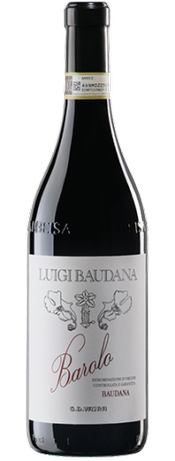 was truly a great one for the Vajra family, as this wine clearly demonstrates. This is rich and even succulent, but still structured and capable of aging gracefully in a positive direction even though it is delicious now. The fruit shows great expressive punch, but still, this is hardly a mere fruit bomb, as the accents of cola and cured meat are wonderfully alluring and just as prominent overall as the pure fruit notes. Probably the best this bottling has looked since 2006, and I’d rather own this vintage than that one, though I’ll soon own both once this becomes available. 96
was truly a great one for the Vajra family, as this wine clearly demonstrates. This is rich and even succulent, but still structured and capable of aging gracefully in a positive direction even though it is delicious now. The fruit shows great expressive punch, but still, this is hardly a mere fruit bomb, as the accents of cola and cured meat are wonderfully alluring and just as prominent overall as the pure fruit notes. Probably the best this bottling has looked since 2006, and I’d rather own this vintage than that one, though I’ll soon own both once this becomes available. 96
Vietti (Novello) Barolo “Ravera” 2016 ($200): Vietti’s 2015 release from the Ravera cru was my “Wine of the Year” for 2019, but the 2016 is down just a couple of clicks, and when tasted blind in January of 2020, finished a bit behind this great house’s Lazzarito bottling from the comune of Serralunga. But with that said, this is still a sensational wine that anyone should feel extremely fortunate to own or taste. Aromatically, it is phenomenal, showing an amazing array of notes recalling violets, spices, incense and cured meat…and more. The flavors seem more compressed and the wine a bit thinner than its one year older sibling from 2015, but when I returned to it after another hour after my initial blind tasting, it had filled out a bit, and may very well just have been in a bit of a lull on the day when I tasted it. (Nebbiolo-based wines definitely go through phases in which they are alternately more expressive or “dumb,” and though the wave form isn’t as dramatic as with Pinot-based wines from Burgundy, this really is “a thing.”) Based on the bouquet alone, this is a great wine. 96
Cascina Adelaide (La Morra) Barolo “Fossati” 2016 ($70): This house has risen like a rocket in my estimation during recent years, backing off on oak influence in favor of primary fruit purity and gaining softer texture by shedding some of the wood tannin that marred earlier releases. I’ve driven by the winery countless times but have never visited, so my entire first sentence here results not from interviewing anyone on the winemaking team, but rather from inference based on the performance of the wines starting about in about 2010 or 2011. This 2016 Fossati shows marvelously rich, soft fruit with deep, dark flavors that seem like they’d surely go hard in the finish…but never do. Savory, balsamic aromas are very enticing, and the balance and integration of all the wine’s structural elements is impeccable. Surely the best Fossati I’ve ever tasted from Cascina Adelaide. 95
Alessandria Fratelli (Verduno) Barolo “San Lorenzo di Verduno” 2016 ($65): Graceful and gorgeous, this is an object lesson in what a vintner with 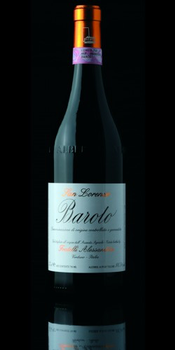 taste and restraint could achieve in 2016. I don’t want to undersell this by over-emphasizing the “restraint” that was shown in growing and crafting the wine, which is quite deep in flavor and shows significant wood influence. Still, the fine balance of structural elements and the proportionality of the aromas and flavors is what really makes this stand out—rather than the sheer weight of the wine. Absolutely beautiful. 95
taste and restraint could achieve in 2016. I don’t want to undersell this by over-emphasizing the “restraint” that was shown in growing and crafting the wine, which is quite deep in flavor and shows significant wood influence. Still, the fine balance of structural elements and the proportionality of the aromas and flavors is what really makes this stand out—rather than the sheer weight of the wine. Absolutely beautiful. 95
Cagliero (Novello) Barolo “Ravera” 2016 ($70): It seems that very little of this wine makes it to the USA, as I could only find one vintage on offer, a 2009 in New York, but I will damned sure be conducting a global search for this vintage from the stellar Ravera vineyard. It is quite ripe but not at all over-ripe, showing sexy cherry liqueur notes with lovely hints of incense and spices. Thanks to its impressive density, it has already absorbed nearly all the oak notes, leaving no overt wood to add to the tannin load, which is low in comparison to the savory and fruity signature of the wine. 95
Cavallotto (Castiglione Falletto) Barolo “Bricco Boschis” 2016 ($75): A consistently excellent producer that makes traditionally-styled wines from excellent vineyard sites, Cavallotto succeeded in 2016 to the surprise of—I’d guess—nobody. This is a rather ripe and rich expression for the growing season, but the wine remains shapely and stylish, with a lovely bouquet and set of flavors interweaving spice notes, primary fruit, subtle oak and savory undertones. A beautiful wine that comes off as complete and convincing. 95
Poderi Colla (Monforte d’Alba) Barolo “Bussia – Dardi Le Rose” 2016  ($70): This wine almost always ends up near the top of the quality pyramid when I taste blind in Alba, and that was the case yet again when the 2016 vintage was shown early in 2020. Twelve bottlings from Bussia were shown, and the tell-tale “Dardi Le Rose” designation for this wine was not included in anything provided by the organizers, so there was no auto-suggestion involved in my evaluation…this rose to the top solely on its considerable merits. Although it shows some meaty richness on the palate, every other descriptor in my notes cites the wine’s “grace” and “class” and “proportionality.” It is virtually perfectly balanced in all respects, with fruit and acid and tannin and wood all seemingly remarkably symmetrical. Poised to age in a harmonious way as a result, and leaving the development of more flamboyant nuances to wait for the arrival of tertiary notes from time in bottle, this is a classic in the making. 95+
($70): This wine almost always ends up near the top of the quality pyramid when I taste blind in Alba, and that was the case yet again when the 2016 vintage was shown early in 2020. Twelve bottlings from Bussia were shown, and the tell-tale “Dardi Le Rose” designation for this wine was not included in anything provided by the organizers, so there was no auto-suggestion involved in my evaluation…this rose to the top solely on its considerable merits. Although it shows some meaty richness on the palate, every other descriptor in my notes cites the wine’s “grace” and “class” and “proportionality.” It is virtually perfectly balanced in all respects, with fruit and acid and tannin and wood all seemingly remarkably symmetrical. Poised to age in a harmonious way as a result, and leaving the development of more flamboyant nuances to wait for the arrival of tertiary notes from time in bottle, this is a classic in the making. 95+
Pira Luigi (Serralunga d’Alba) Barolo “Margheria” 2016 ($65): The 2015 vintage from this cru was fabulous from the house of Luigi Pira, and the 2016 is hard on its heels, if in a notably different style reflective of the latter vintage. Not as bulky or assertive, the 2016 is much more suave and feminine in character, which would be a bit surprising from Serralunga (which has a well-earned reputation for rich renditions of Barolo) if not for the fact that the 2016 growing season resulted in this sort of profile almost everywhere across the Barolo district… provided that producers didn’t get greedy and wait too long to harvest. Oak is showing but only in the background, and there’s plenty of tannin, but of an unobtrusive sort. Both red and black fruit tones are evident, with lovely floral topnotes to the bouquet. The finish is exceptionally long and pure, and the wine will have a broad window of enjoyability, extending from the minute you bring it into your home until 15 years from now. 95
Diego Pressenda (Monforte d’Alba) Barolo “Le Coste di Monf
